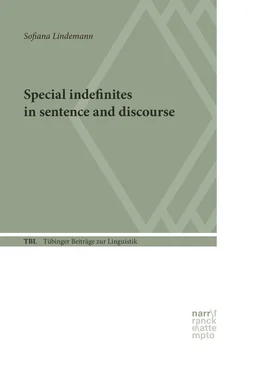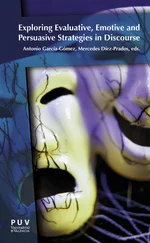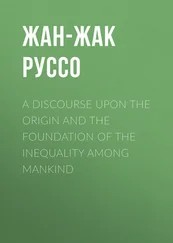This book takes a different perspective on the analysis of indefinite noun phrases by investigating their function within larger discourse units. I argue that despite being associated with locally non-accessible referents, indefinite noun phrases fulfil different functions that become visible in larger discourse units. In a communication model that assumes cooperative discourse participants, speakers use particular indefinite noun phrases to indicate their referential intention and to instruct hearers to establish a permanent discourse representation for the referents associated with those indefinite noun phrases. In addition to these requirements, the newly introduced referents differ with respect to their potential to give structure to the subsequent discourse. The discourse structuring potential captures the relation between the type of indefinite expression used and the function the referent associated with this indefinite noun phrase will play in the upcoming discourse. This book provides empirical evidence from English, German and Romanian to sustain these claims. Moreover, I will propose two measures for the discourse structuring potential of indefinite noun phrases, which can be observed as the discourse unfolds. The two measures are: the likelihood of subsequent mention and the topic shift potential of a referent.
An account of indefinite noun phrases that integrates the role played by their associated referents in the ensuing discourse was advanced for English indefinite noun phrases headed by the simple indefinite article a/an and indefinite this , as illustrated in (3). The difference between the two indefinite noun phrase forms is that the latter not only introduces discourse and hearer-new referents, but also indicates the referential intention of the speaker to elaborate upon this referent (Perlman 1969, Prince 1981, Maclaran 1982, Wald 1983, Wright and Givón 1987, Gernsbacher and Shroyer 1989). As the expectation about the elaboration of the referent introduced by indefinite this remains unfulfilled in (3a), compared to (3b), the sentence containing this expression is rendered infelicitous. On the contrary, the simple indefinite article a/an is neutral with respect to this expectation (i.e. it does not require its referent to be further elaborated upon), which is mirrored in its acceptance in both sentences (3a) and (3b).
| (3) |
(a) |
Becky wrote some thank-you notes using {a/ #this} purple pen; then she mailed the notes to her friends. |
|
(b) |
Becky wrote some thank-you notes using {a/ this} purple pen, which suddenly exploded, spilling purple ink all over Becky’s clothes and furniture! (Ionin 2006: 181) |
|
|
Indefinite this has been considered an exception found in English and few other languages, but broadening our perspective and looking beyond this language will bring new insights. The present book brings empirical evidence for the observation that English is not the only language in which different types of indefinite noun phrases vary with respect to their preference for particular semantic readings and simultaneously with respect to their discourse structuring potential. Based on data from German and Romanian, I will show that these two languages have adopted or adapted different means to indicate that referents associated with particular types of indefinite noun phrases retain a preferential status in the subsequent discourse. The purpose of this introductory part is to present the phenomena central to the analyses in the next Chapters and to sketch out the central aspects of the claims I wish to make. The conclusion of this Chapter contains an overview of the book.
1.1 Introducing the phenomena
This book contains a case-based proposal as to how it could be accounted for the discourse structuring potential of different types of indefinite noun phrases. Besides English indefinite this , the two types of indefinite noun phrases central to the present investigation are indefinites headed by so’n in German and pe -marked indefinites in Romanian. In the following, I introduce the relevant contrasts in the two languages in turn.
German developed two determiners that are similar in function to English indefinite this , namely the indefinite demonstrative diese(r) (Wald 1983, Lyons 1999) and the complex determiner so’n (Wespel 2007, Chiriacescu 2010, von Heusinger 2011). In this book, I focus solely on the latter determiner form, as it comes closer to its English cognate in terms of distribution in colloquial language. Similar to English indefinite this , indefinite noun phrases headed by so’n show a tendency for referential readings, as illustrated in (4).
| (4) |
(a) |
Anna |
will |
so’n Buch |
von |
Mircea Eliade |
lesen. |
|
|
Anna |
wants |
so-a book |
by |
Mircea Eliade |
read |
|
|
‘Anna wants to read so-a book by Mircea Eliade.’ |
|
(b) |
Anna |
will |
ein Buch |
von |
Mircea Eliade |
lesen. |
|
|
Anna |
wants |
a book |
by |
Mircea Eliade |
read |
|
|
‘Anna wants to read a book by Mircea Eliade.’ |
While the indefinite noun phrase ein Buch (‘a book’) in (4b) is ambiguous between a referentially specific and a non-specific reading, the indefinite noun phrase headed by so’n in (4a) bears only a specific interpretation as it refers to a particular book Anna wants to read.
A similar contrast is found in Romanian, a language in which direct objects are realized distinctively, as only some indefinite noun phrases are preceded by the morpheme pe , whereas the other class of indefinites remains unmarked (Niculescu 1965, Pană-Dindelegan 1997, Cornilescu 2001, Chiriacescu 2007, von Heusinger and Onea 2008, Lindemann 2018). Although the variation between a pe -marked direct object and a non- pe -marked direct object applies to definite unmodified noun phrases in equal manner (Chiriacescu 2007, von Heusinger and Chiriacescu 2009, 2011), here I focus only on cases that involve postverbal indefinite noun phrases, as illustrated in (5). Note that direct object arguments in Romanian are often accompanied by pronominal clitic doubling.
| (5) |
(a) |
Petru |
l- |
a |
vizitat |
pe |
un |
actor. |
|
|
Petru |
CL |
Aux. |
visited |
pe |
an |
actor |
|
|
‘Peter visited an actor.’ |
|
(b) |
Petru |
a |
vizitat |
un |
actor. |
|
|
|
|
Petru |
Aux. |
visited |
an |
actor |
|
|
|
|
‘Peter visited an actor.’ |
Only in (5a) is the indefinite noun phrase un actor (‘an actor’) accompanied by the free morpheme pe , in (5b), the indefinite noun is neither preceded by pe , nor doubled by the pronominal clitic. The distribution of pe -marking with indefinite noun phrases has been either left unaccounted for in the literature so far, or has been explained in terms of different types of specificity (Farkas 1978, Dobrovie-Sorin 1994, von Heusinger and Onea 2008). According to the latter proposal, the referent associated with the direct object in (5a) is interpreted as referring to a particular actor, the identity of which is “known” to the speaker, whereas the referent in (5b) is analysed as being neutral with respect to this issue and thus allowing for both, a specific and a non-specific reading of the referent.
Читать дальше












